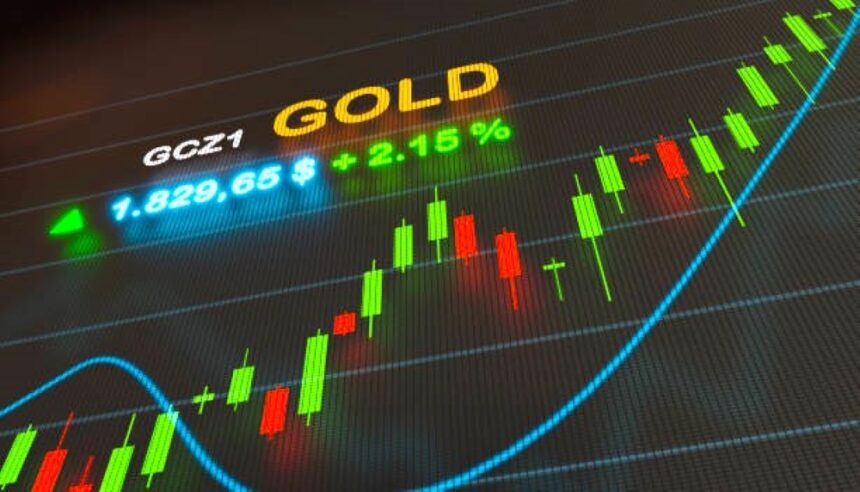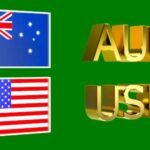Gold Holds Steady Amid Tariff Turmoil and Geopolitical Risks, CPI in Focus
The gold market is experiencing modest upward momentum in the early hours of Wednesday’s Asian session, with the yellow metal inching higher toward the $3,340 mark. While the advance has been restrained by a modestly stronger US Dollar (USD), growing geopolitical tensions and revived trade uncertainties are underpinning safe-haven demand for gold (XAUUSD).
With the spotlight firmly fixed on the upcoming US Consumer Price Index (CPI) data, traders are adopting a cautious approach. The inflation data is expected to shape expectations around the Federal Reserve’s rate trajectory, which in turn will impact USD direction and gold’s near-term appeal. In this complex global environment—marked by escalating geopolitical crises and unresolved US-China trade disputes—gold’s resilience continues to reflect its role as a hedge against uncertainty.
Gold Edges Higher in Cautious Trade Ahead of US CPI
The price of gold ticked higher in early Asian trading on Wednesday, recovering from a subdued range-bound session earlier in the week. Trading at around $3,340 per ounce, the metal remains just shy of its recent high but is buoyed by broader market anxiety over key risk events.
Investor caution stems from the imminent release of the US Consumer Price Index (CPI) for May. Markets are currently expecting a 2.5% year-over-year rise, a modest acceleration that could influence the Federal Reserve’s future interest rate decisions. Stronger-than-expected CPI data may fuel hawkish bets and bolster the USD, thereby capping gold’s gains. Conversely, a softer print could rekindle hopes for rate cuts and lift gold further.
Trade Tensions Return as Trump’s Tariffs Get Legal Backing
A critical development that’s supporting gold prices is the US Federal Appeals Court’s ruling, which temporarily allows the continuation of President Donald Trump’s broad tariffs, including those related to the controversial “Liberation Day” package. This ruling reversed a previous lower court decision that had deemed the tariff imposition procedure unlawful.
The legal green light provides Trump’s administration with greater leverage in the ongoing trade negotiations with China. While the US and China have reportedly made progress—with both sides agreeing on a framework to implement the Geneva Consensus—the lingering presence of aggressive tariffs casts a shadow over any potential resolution.
Markets remain skeptical, as the deal still requires sign-off from President Trump and his Chinese counterpart. For now, the ambiguity surrounding global trade flows is helping gold retain its safe-haven appeal.
Geopolitical Flashpoints Amplify Risk-Off Sentiment
Beyond trade disputes, the gold market is also responding to a rapidly deteriorating geopolitical backdrop. Russia has continued to bombard Ukraine’s northeastern city of Kharkiv, showing no signs of yielding to international calls for a ceasefire. The sustained conflict in Eastern Europe not only threatens regional stability but also reverberates across global commodity and financial markets.
Simultaneously, tensions in the Middle East remain dangerously elevated. Israel’s military campaign in Gaza shows no signs of de-escalation, adding to the broader sense of geopolitical fragility. As a traditional hedge against geopolitical risk, gold is benefiting from renewed demand as investors seek safety from mounting global instability.
US Labor Market Resilience Clouds Fed’s Rate-Cut Path
Gold’s gains have also been tempered by the resilient US labor market, which complicates the Federal Reserve’s calculus on interest rates. Last Friday’s Nonfarm Payrolls (NFP) data showed a 139,000 increase in jobs for May, outpacing market expectations of 130,000. Although slightly below April’s revised 147,000 figure, the data confirms a still-strong employment landscape.
The Unemployment Rate held steady at 4.2%, while Average Hourly Earnings remained firm at 3.9% YoY, underscoring a steady wage-growth environment. This has led some market participants to temper their expectations for an imminent Fed rate cut, potentially reducing gold’s near-term appeal due to the opportunity cost of holding a non-yielding asset.
However, despite stronger jobs data, markets still price in two rate cuts before the end of 2025. Investors are waiting for more clarity from this week’s inflation reports before making firmer judgments about the Fed’s next move.
Trump Pushes for Rate Cuts as Europe Moves Aggressively
Political pressure on the Federal Reserve continues to mount, especially from President Trump. In a post on Truth Social, Trump blasted Fed Chair Jerome Powell, accusing him of lagging behind global counterparts. He emphasized the European Central Bank’s aggressive easing, stating, “Europe has lowered [rates] NINE TIMES”, and demanded that Powell “LOWER THE RATE.”
This political rhetoric, although not new, injects another layer of uncertainty into the Fed’s policy trajectory. Should the Fed bow to political pressure—something markets consider unlikely—it could ignite a sharp rally in gold. But even without direct intervention, Trump’s messaging stirs market doubts about central bank independence, potentially weighing on USD sentiment and lifting XAUUSD.
China’s Economic Weakness Adds to Gold Tailwinds
From an international standpoint, China’s economic data continues to show worrying signs. The Consumer Price Index (CPI) dropped 0.1% YoY in May, matching April’s decline and narrowly beating expectations for a 0.2% fall. On a monthly basis, CPI fell 0.2%, reversing April’s modest rise. Meanwhile, the Producer Price Index (PPI) contracted sharply by 3.3% YoY, deepening April’s 2.7% decline.
These figures point to deflationary pressures in China, the world’s second-largest economy and a key pillar of global growth. As China grapples with weak demand and falling prices, fears of a broader global economic slowdown have resurfaced. This has further underpinned demand for safe-haven assets like gold.
Muted USD Strength Fails to Derail Gold Rally
Despite the modest gains in the US Dollar Index (DXY)—which was last seen hovering around 99.10—the greenback remains well below recent highs. The subdued price action reflects market caution ahead of the CPI report and suggests that traders are not aggressively betting on USD strength for now.
Given the inverse relationship between gold and the US Dollar, the current dollar dynamics are supportive of gold prices. A sharp move higher in the USD after the CPI print could, however, limit gold’s upside in the near term. Until then, the fundamental backdrop remains favorable for gold.
Upcoming US Data Will Determine Gold Next Direction
All eyes now turn to the US CPI report due later Wednesday, followed by Producer Price Index (PPI) data on Thursday. These two critical inflation prints will provide valuable insights into the Fed’s policy outlook and could trigger significant market volatility.
- A hot CPI or PPI print could raise doubts about near-term rate cuts, strengthen the USD, and pressure gold lower.
- A soft reading, on the other hand, could affirm expectations for policy easing and open the door for XAU/USD to break above recent highs.
In this data-sensitive environment, gold traders are likely to remain on the sidelines, awaiting clearer direction.
Conclusion: Gold Caught Between Uncertainty and Optimism
While gold is currently sticking to modest intraday gains, the precious metal remains caught in a tug-of-war between geopolitical risk, economic uncertainty, and monetary policy expectations. The looming release of US inflation data represents the next major catalyst that could determine whether XAU/USD pushes higher or reverses course.
As things stand, the broader macroeconomic narrative—rising geopolitical tensions, global trade anxieties, and persistent deflation in China—favors continued safe-haven demand. But without confirmation from the Fed on rate cuts, gold’s upside remains modestly capped.
Until greater clarity emerges, gold will likely remain range-bound, oscillating between support from risk aversion and resistance from USD strength.
[faq-schema id=”39834″]









